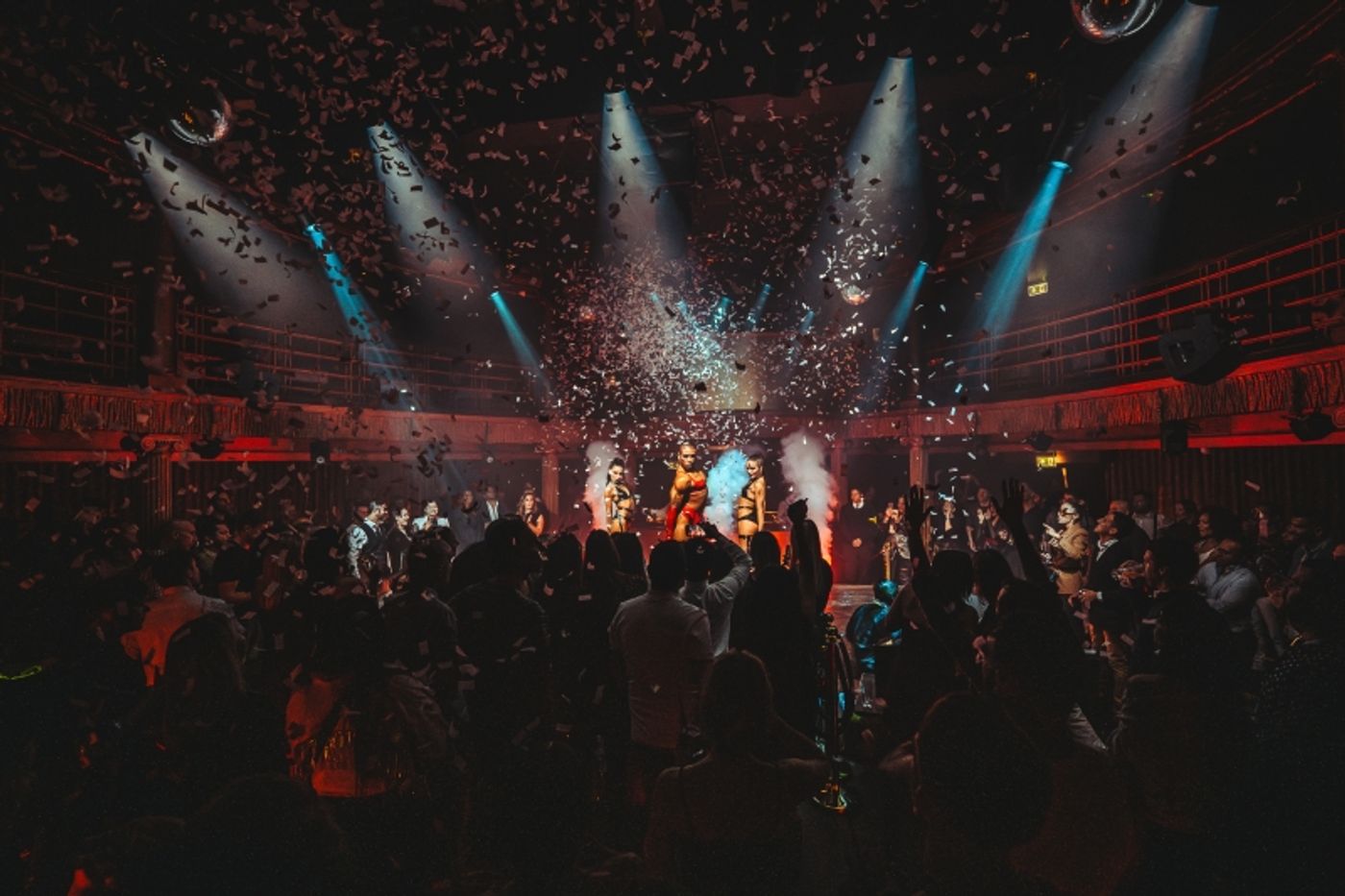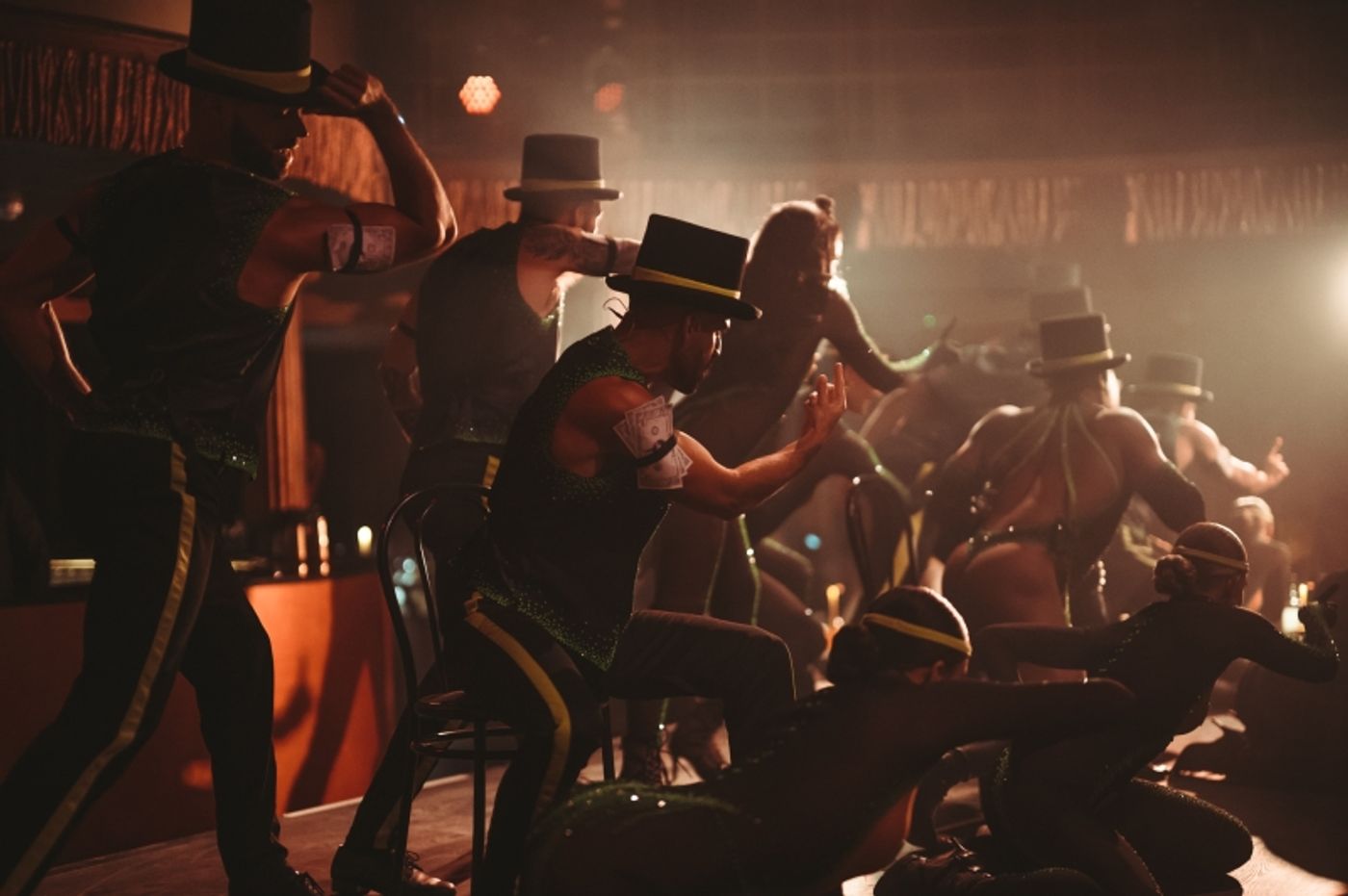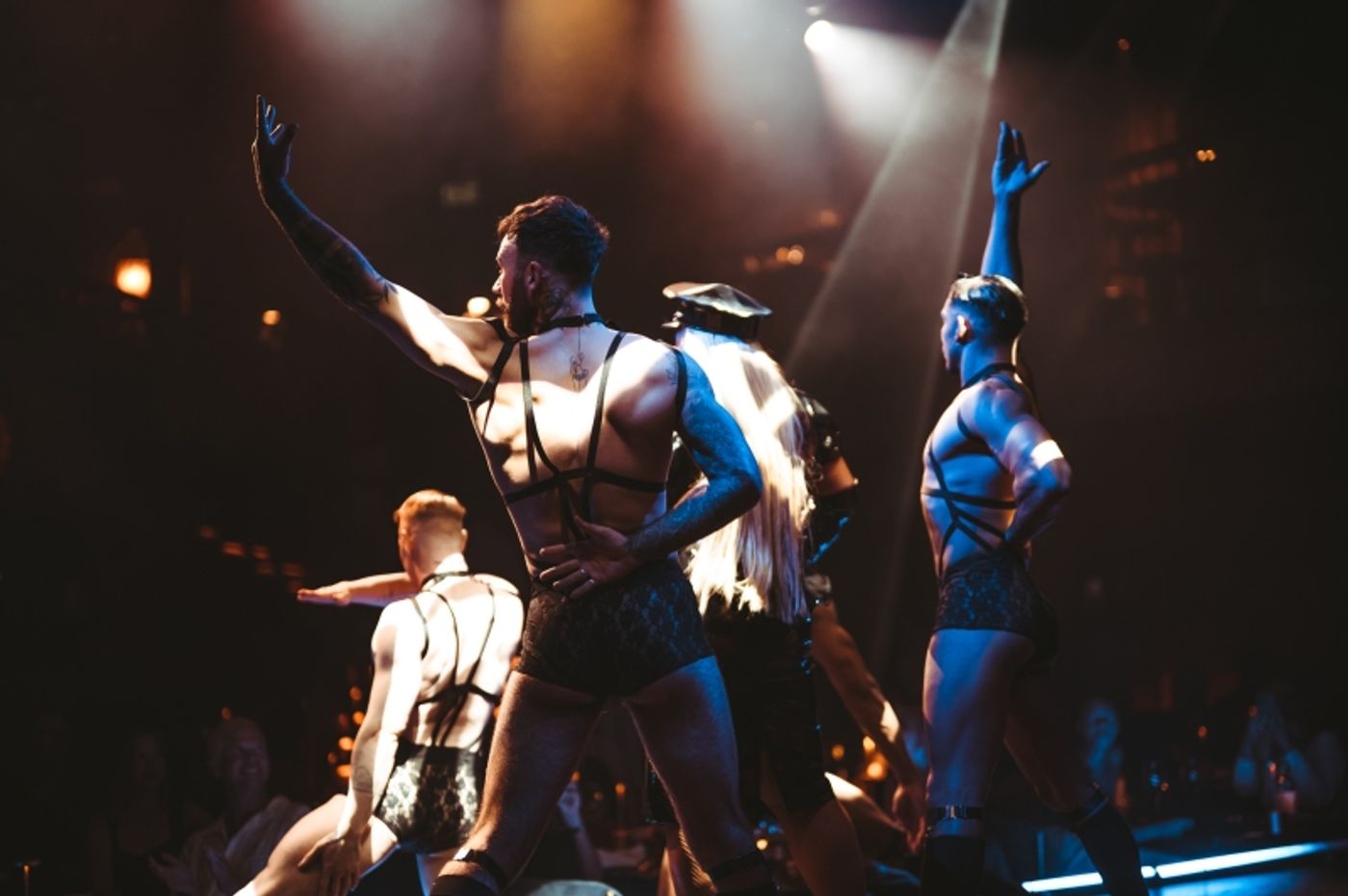Review: BESOS, BEATS AND BEAUTIES, Lio London
The successor to the Café de Paris is a dazzling show that deserves its place in the capital.

![]()
Operating from the former Café de Paris, dinner-cabaret experience Lio London is coming up to its first anniversary and is celebrating with its latest show Besos, Beats and Beauties.
For those wincing at the use of the word “experience”, there’s more to what happens in this historic venue than just a food and a floorshow with the physical environment, wait staff and even the table napkins there to amplify this company’s particular brand of entertainment. The whole place reflects the Lio template of its Ibiza and Mykonos clubs and is a world away from what fans of its predecessor would have seen throughout its storied history.
The Café de Paris began life beneath the thoroughfares of Piccadilly almost a century ago in May 1924. There is also more than a hint of tragedy about the place - and not just because the ballroom was designed to be similar to the one on the ill-fated Titanic.
It was allowed to stay open during the Second World War when most other places were forced to close, the government reasoning that the four storeys of masonry above it would protect the partygoers from German bombs. Sadly, on the night of 8 March 1941, this was proven untrue: just after 26-year-old bandleader Ken "Snakehips" Johnson and his fellow musicians started their evening show, two bombs dropped down a ventilation shaft and straight into the ballroom landing in front of the stage. The explosions had a devastating effect: 34 people died including Johnson, other band members, staff and diners with another 80 injured.

The venue recovered after the war to become an upmarket joint frequented by young royals from all over Europe. Princess Elizabeth held her twenty-third birthday party there in 1949 and her sister Princess Margaret followed suit for her 21st. Towards the end of the twentieth century, it was well known for the Anne Pigalle’s shows Les nuits du Mercredi which brought over the French style of cabaret.
Brian Stein and his Maxwell's Restaurants Group took over the nightclub in 2002 and, by a decade later, was London’s top hotspot for variety and fine dining. Its final burst before ultimately closing its doors in 2020 saw the the cream of London’s cabaret scene appear in high-concept shows created by and starring Reuben Kaye. I spenty many memorable nights there watching (among others) burlesquer Kiki Kaboom and her cheeky rendition of Connie Vannett’s The Pussy Cat Song, Chrisalys’ signature flaming pig act and deviant musical comedy duo East End Cabaret.
Lio London is a very different proposition than what has come before both in terms of entertainment and interior styling. Physically, the floorspace has been redrawn with bars now positioned beneath its iconic staircase and at the opposite end of the room. There are still booths along the left and right hand sides but there are now cabaret tables in front of them. A long stage sits across the room facing onto perpendicular rows of tables. Unless one of the ever-vigilant wait staff is zipping by to fill your glass or grab empty plates, a good view is had by all.
Whether that view is enjoyable or not depends somewhat upon expectations. The show itself is a few light years away from the provocative and adult fare seen in the era of Kaye and co and now consists almost entirely of a constant flow of dance numbers set to music familiar to Radio 2 listeners (think Bee Gees, Queen, Elton John plus an assortment of relics from classic musicals).

Each Lio season runs from September to June and its latest show features an entirely reimagined choreography, acts and clothing designs to the previous year. The themes of Besos, Beats and Beauties’ dance pieces run from the family-friendly (an exquisitely designed and delivered homage to Barbie) to the more adult with more than a few allusions to Fifty Shades Of Grey. A couple of what could generously be labelled as variety acts pop up during the two-hour-plus running time but to disappointing effect: an ecdysiast in a beautiful outfit pirouettes as she strips with less flair than can be found in the average burlesque joint while an aerial hoop is hooked up to the rigging and lowered to the stage only to serve as a sitting place for a solo singer.
This is, for better or worse, an expertly executed evening of something akin to cruise ship cabaret. On the one hand, its production values (especially sound and lighting) and the skill levels of its dancers are up there with what could be found in a West End musical or on any given night at Sadler’s Wells. On the other, it never aspires to shock or amaze to any extent that would shock anyone in the room, the constant titillation from the cadre of lithe and gorgeous dancers - all of whom apparently make very good use of their gym membership - rarely goes beyond a PG rating and some of the routines are cheesier than the contents of an Italian’s fridge, albeit with a knowing wink to the audience.
The dinner aspect of the entertainment is notable as one of the few continuing traits from the Maxwell days. The food we sampled was of a very high quality and - of course - at a very high price, a correlation endemic to this neck of the city. The menu reflects Lio’s Balearic origins with many possessing a Mediterranean bent. Seafood dishes include gillardeau oysters with a jalapeño consommé, sea bass carpaccio with a watermelon relish, and grilled octopus with hispi slaw while hearty meat eaters can tuck into roast half bresse chicken served with a lemon jus or a a kilo of bone-in rib eye steak with patatas bravas and padrón peppers.

Those who want to go down the à la carte route can either opt for a mezzanine table (with a minimum spend of £100) or a table in the ballroom proper (minimum spend £200). The online menu has no prices (if one has to ask…) but, as an example, a one-litre bottle of still water cost us around £8. Those looking for something more inclusive can choose from three options. The Bronze package (£100pp) has a cute cocktail and a selection of tapas, Silver (£170pp) comes with a three-course menu with dishes including stonebass ceviche, Patagonian hake with clams, and crema Catalana while, at the top end, those going for Gold (£220pp) start with a glass of bubbly before tucking into course sharing menu featuring the likes of tuna tartare, 65-day aged Angus tomahawk with garlic butter, and dark chocolate mousse with sour cherry.
There will be those who decry the food prices, especially in the current cost of living crisis, but the venue offers show-only tickets (at £50) and there are plenty of cheaper options within walking distance of this venue. Then there will be those who say that this is not cabaret in any of the classic forms like songbook or variety but the more established London Cabaret Club has been hosting this exact type of show for almost a decade in the Bloomsbury Ballroom. This is indeed a far cry from the dark and edgy shows seen here before the pandemic but many of the talents seen there are still plying their trade, either at regular haunts (for example The Double R Club in Bethnal Green), in nightspots like The Box or as part of travelling troupes.
As a theatrical spectacle, Lio London's Besos, Beats and Beauties deserves to be evaluated on its own terms and not compared to the pre-Covid era entertainment. It may veer at times into style over substance but there’s no denying that the money has been well-spent on a dazzling show that deserves its place in the capital.
Lio London: Besos, Beats and Beauties continues until June 2024.
To celebrate the centenary of the former Café de Paris, Lio London is hosting a special 1920s themed celebration on the night, playing homage to the previous performers of the time on 14 March. More information here.
Photo credit: Lio London
Reader Reviews
Videos

